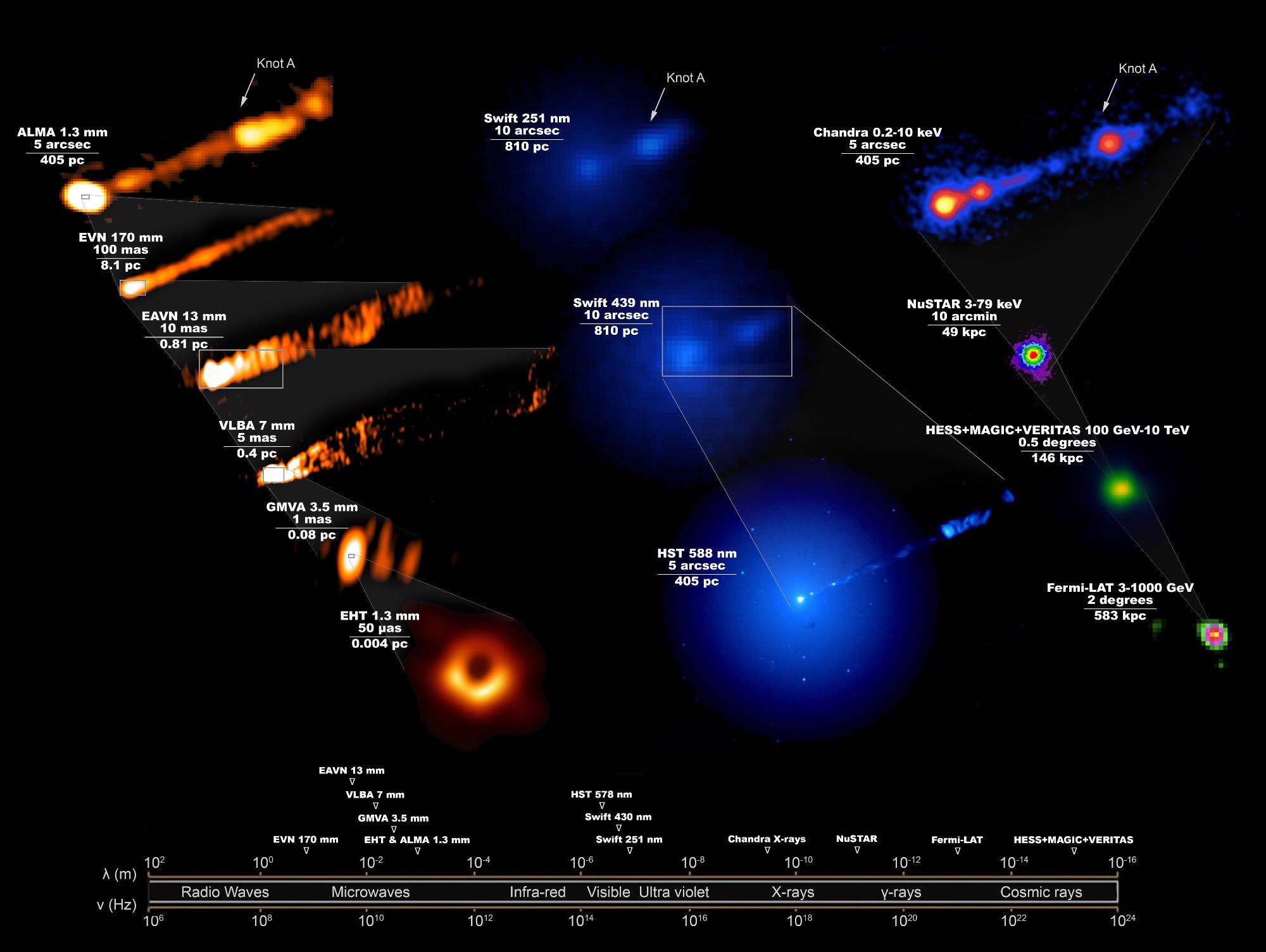Apr 15 2021
The first-ever image of a black hole—the supermassive black hole found at the core of the M87 galaxy—was captured by an international collaboration of researchers in 2019 by using a worldwide collection of radio telescopes known as the Event Horizon Telescope (EHT).

Image Credit: EHT Collaboration, NASA/Swift, NASA/Fermi, Caltech-NuSTAR, CXC, CfA-VERITAS, MAGIC, and HESS.
The M87 galaxy is located nearly 55 million light-years from Earth. This long-awaited breakthrough was a significant scientific landmark. But any image at a single wavelength can offer only a partial picture of the whole phenomenon.
We knew that the first direct image of a black hole would be groundbreaking. But to get the most out of this remarkable image, we need to know everything we can about the black hole’s behavior at that time by observing over the entire electromagnetic spectrum.
Kazuhiro Hada, Study Co-Author, National Astronomical Observatory of Japan
A supermassive black hole’s immense gravitational pull can induce jets of particles to move at almost the speed of light over large distances. The result leads to electromagnetic radiation covering the whole range from radio waves, to visible light, to gamma rays.
The video depicted above shows results from every telescope involved in the observing campaign, unraveling previously unobserved structures and the effect of the black hole on its surroundings in regions covering as wide as 1 to 100,000 light-years.
Understanding the particle acceleration is really central to our understanding of both the EHT image as well as the jets, in all their ‘colors’. These jets manage to transport energy released by the black hole out to scales larger than the host galaxy, like a huge power cord. Our results will help us calculate the amount of power carried, and the effect the black hole’s jets have on its environment.
Sera Markoff, Study Co-Author, University of Amsterdam
The researchers expanded their view of the region close to the 6.5-million-solar-mass black hole by mounting a multi-wavelength observing campaign, which involved 19 ground- and space-based observatories operating at X-ray, gamma-ray, radio and visible-light wavelengths.
For the study, the Atacama Large Millimeter/submillimeter Array (ALMA) and the National Science Foundation’s Very Long Baseline Array (VLBA) were employed.
There are multiple groups eager to see if their models are a match for these rich observations, and we’re excited to see the whole community use this public data set to help us better understand the deep links between black holes and their jets.
Daryl Haggard, Study Co-Author, McGill University
Published in The Astrophysical Journal Letters, the new study offers a useful resource to enable researchers to gain insights into the physics of how such giant black holes work and strongly impact their surroundings.
Video: A Black Hole and its Far-Reaching Effects
A black hole and its far-reaching effects. Sophia Dagnello, NRAO/AUI/NSF, CXC, and EHT Collaboration.
Journal Reference:
Algaba, J. C., et al. (2021) Broadband Multi-wavelength Properties of M87 during the 2017 Event Horizon Telescope Campaign. The Astrophysical Journal Letters. doi.org/10.3847/2041-8213/abef71.